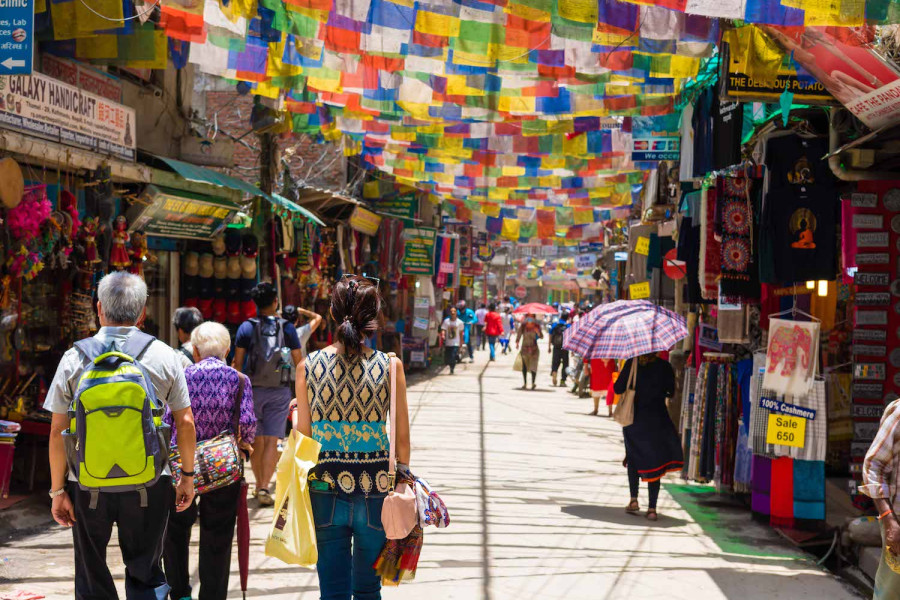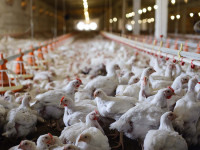Money
Nepal's hotels and restaurants making slowest recovery
Transactions of the hotel and restaurant sector have risen to 57.2 percent of pre-Covid levels, compared to the national average of 74.7 percent, the central bank says.
Sangam Prasain
Nepal's hotels and restaurants are still straining to get back on their feet after the coronavirus disaster while most business sectors have moved into full recovery mode, a study released by the central bank on Wednesday shows.
The third follow-up survey conducted by Nepal Rastra Bank in October reveals that transactions of the hotel and restaurant sector have risen to a little over half of pre-Covid levels, reaching 57.2 percent last month, compared to the national average of 74.7 percent.
Last year, after Nepal imposed a complete lockdown on March 24, hotels and restaurants saw their turnover plunge to 7 percent in June. Transactions crept up to 18 percent in November after the lockdown was lifted in July and flights resumed in September.
The central bank survey shows that as of April 29, 2021, when the country imposed the second lockdown that lasted till September, the turnover of hotels and restaurants had risen to 40.8 percent.
On September 23, Nepal threw away the seven-day quarantine requirement and resumed issuing on-arrival visas to all vaccinated foreign travellers in a bid to bring its virus-ravaged tourism industry back to life.
The scale of the devastation in the country’s tourism sector is sure to leave lasting scars, analysts say.
“It could take years for the hospitality business to recover fully,” said Binayak Shah, senior vice president of Hotel Association Nepal. The severity of this pandemic has made it clear that restaurants and hotels will continue to suffer for far longer than originally anticipated,” Shah said.
Hotels said they saw harrowing occupancy rates in the peak season of November. Occupancy rates are still below 20 percent, according to industry insiders.
Nepal saw the highest post-Covid monthly arrivals in October, pushing the total number since the start of the year across the 100,000 mark.
According to data of the Nepal Tourism Board, Nepal welcomed a respectable 23,284 foreign tourists by air in October, but the number is still 90 percent below pre-virus levels.
The third follow-up survey was conducted by telephone from October 24 to November 3.
The results are based on responses from 546 enterprises across the country.
The central bank said that the highest number of respondents—30 percent—were from the wholesale and retail sector, 17 percent from manufacturing and production, and 16.3 percent from the hotel and restaurant sector.
The study shows that the average production and transactions of various economic sectors—agriculture, industry and services, among others—stand at 74.7 percent of their usual level before the pandemic.
Nara Bahadur Thapa, former executive director of Nepal Rastra Bank, said that the average national production and transactions of various sectors reaching 75 percent of pre-Covid levels was indeed a positive recovery.
“Though the rebound has not happened at a faster rate, the figures show that full recovery will not take more than a year. But this will depend on whether or not Nepal sees a third wave of the Covid-19 pandemic, which has currently started to batter European countries.”
Nepal on Wednesday reported 305 new coronavirus cases in the last 24 hours, taking the nationwide infection tally to 820,004.
According to the central bank, the transport sector recorded the slowest recovery after hotels and restaurants. Transactions of the transport and storage sector stood at 69.5 percent of the level in happier days.
The highest recovery rate has been observed in the minerals and exploration sector with its production and transactions reaching 93.3 percent of pre-Covid-19 levels.
Transactions and production of the agriculture, forestry and fisheries sector have reached 79.3 percent of previous levels.
The survey shows that Nepal’s industries and enterprises appear to be on track to faster recovery with 87.2 percent of businesses and industries resuming full operation.
The minerals and exploration sector and the electricity, gas and water sector have made the fastest recovery, and enterprises in these sectors are now 100 percent open. The survey reveals that 78.7 percent of hotels and restaurants are fully opened, while 21.3 percent are partially opened.
According to the survey, 88.9 percent of the construction sector is fully open while 87.1 percent of manufacturing has fully opened compared to pre-Covid levels.
The survey shows that large industries are almost fully open.
As per central bank data, 90.9 percent of industries having a capital of more than Rs500 million are fully open while 88.4 percent of cottage industries are fully open.
The World Bank said in its latest report that the first wave of the pandemic and associated lockdowns caused large contractions in economic activity, which led to employment losses in Nepal. More than two out of every five workers reported either a job loss or a prolonged work absence. A quarter of these jobs had not been recovered in late 2020.
Although men and women experienced similar losses in employment, more female workers (30 percent) reported permanently losing a job than male workers (23 percent).
Younger workers suffered the most of any age group, with 59 percent of workers in the 15-25 years age group reporting employment losses.
The multilateral funding agency said that manufacturing and service jobs were harder hit than agriculture; but the number of hired labourers in agriculture fell by half. Though the farm sector was least exposed to the crisis, one in three farm hands lost their jobs.
“The recovery is looking difficult, especially in the tourism sector. We don’t have a common national strategic policy for recovery. We are all scattered,” said Shah. “The road to recovery will be difficult if we don’t coordinate.”




 19.12°C Kathmandu
19.12°C Kathmandu













%20(1).jpg&w=300&height=200)
